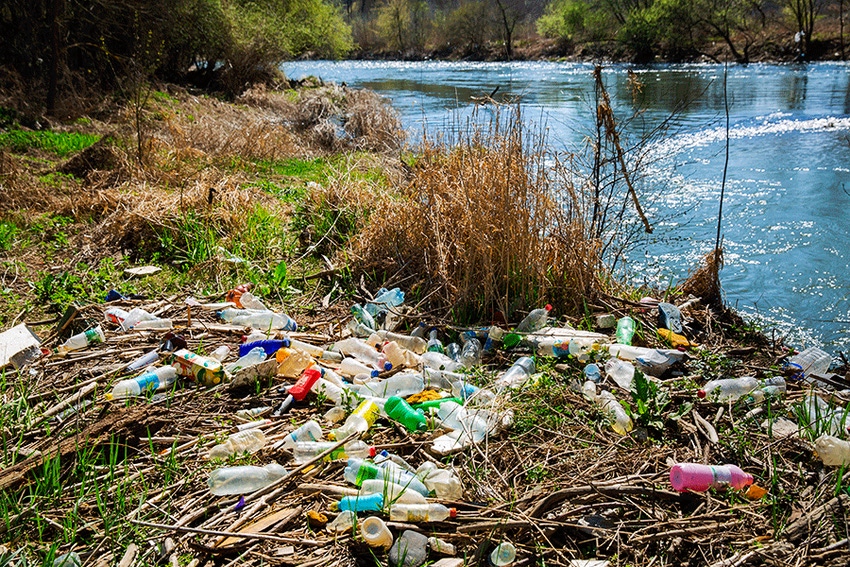
The USDA Cotton Classing Office at Dumas, Ark., which classes cotton for western Mississippi and southeast Arkansas, will be using two new extraneous matter classing codes for the 2018/19 crop to reflect the increasing incidences of plastic contaminants in cotton modules.
Keith W. Maloney, area director for the USDA Agricultural Marketing Service cotton program at the Dumas facility, says the USDA Farm Services Agency plans to use the new Code 71 for light plastic contamination and Code 72 for heavy plastic contamination. The new codes were implemented to distinguish plastic contamination from other extraneous matter that had been reported in past years in Code 61 and Code 62. The discount structure for the new 71/72 codes will be the same as for 61/62.
“For the past several years we’ve been noticing a presence of plastic in the cotton samples we process,” Maloney said at the recent joint meeting of the Delta Council’s Ginning and Cotton Quality Improvement Committee and the Southern Cotton Ginners Association. “Last year, we started sending some of these to the Memphis headquarters for them to examine and determine the fine line for plastics content.
New round bale module wrappers for 2018 have markings to show where they should be cut for opening.
“In the past, we always coded extraneous matter as Code 61, but with the increased amounts of plastic in samples it was decided to establish the two new codes, 71 for light plastic, and Code 72 for heavy plastic. Most of what we’ve been seeing thus far would be Code 71, but we’ve also seen some heavy plastic samples that would be Code 72.”
The FSA notes that loans for ELS cotton that has a Code 71 or Code 72 extraneous matter code will require the producer/CMA to visit the local county office for processing. This is a result of programming changes that are needed only for ELS cotton.
OPPORTUNITY TO INSPECT
“When we get a sample that classes Code71 or 72,” Maloney says, “we will notify the gin where the sample originated, and offer them an opportunity to come in an examine it. By doing so, they may be able to determine how the contamination occurred.”
For questions regarding FSA extraneous matter codes for plastic contaminants in cotton samples, contact Kelly Hereth Dawson at [email protected] or 202/720-0448. The offices will also save all samples that contain plastic for management and customer review, as needed.
Lauren Krogman, assistant manager for marketing and processing technology for the National Cotton Council, noted that a new 1.5 hour video is now available to ginners and producers, along with an information packet, for training module harvester operators and gin employees on contamination sources and the importance of eliminating them. “Our cotton has the reputation of having the least contamination in the world,” she said, “but it remains a big problem for the industry and we need to be vigilant in dealing with it.”
Haywood Wilson, chairman of the Delta Council Ginning and Cotton Quality Improvement Committee, observed that “This kind of contamination is not going to be a light hit in terms of deductions. And farmers getting those deductions are going to be looking at the gins, especially those farmers who are still running conventional moduling equipment.
“But it’s not something ginners alone can solve; we need for farmers to join the battle against contamination. The U.S. has been known for a long time for high quality cotton; if we keep seeing more and more of this kind of contamination, we’re going to lose that reputation. This is a serious issue, and we’ve got to approach it in a positive way and keep working on getting plastic out of our cotton.”
MODULE WRAPPER CHANGE
David Cochran, Southern Cotton Ginners Association president, noted that John Deere plastic wrappers for their round module harvesters will this year have a cut mark for opening the module at the gin. There may be some 2017 wrappers left over that won’t have the cut mark, but all the new ones will have it.”
Haywood Wilson pointed out that “everyone needs to be aware that the actual cut is three feet from the markings on tape on the tape of the wrapper. There is an arrow pointing to the area to be cut with the words ‘Cut three feet from this arrow.’” He said gin crews need to be trained to be aware of the three-foot mark so they can be sure that the knife will hit the proper place when slitting the module wrapper.
SCGA’s David Cochran, also a producer, says “I spend a lot of hours during the summer going through fields picking up plastic bags from discount stores, grocery stores, or other retailers. They’re everywhere. It’s almost a full-time job, especially during harvest, to stay in front of the harvesters and pick this stuff up.”
In the discussion, it was suggested that industry representatives investigate the potential for a sustainability initiative through the National Cotton Council, Cotton Incorporated, and other industry segments to develop non-plastic bags for use at retail, something organic that would be biodegradable.
One producer commented: “This problem is only increasing. At some point, people going to have to give up a little bit of convenience to solve the problem of plastic bags, not just to benefit farmers, but the overall environment. The very people who are putting pressure on farmers to be more sustainable are somewhat hypocritical when they’re using hundreds of billions of these plastic bags every year.”
About the Author(s)
You May Also Like




